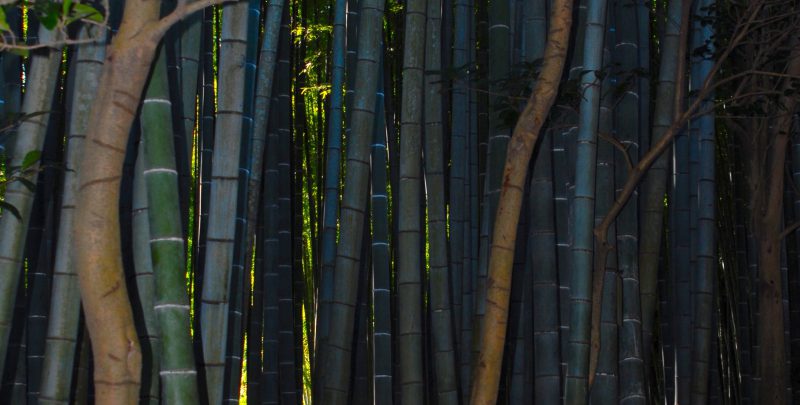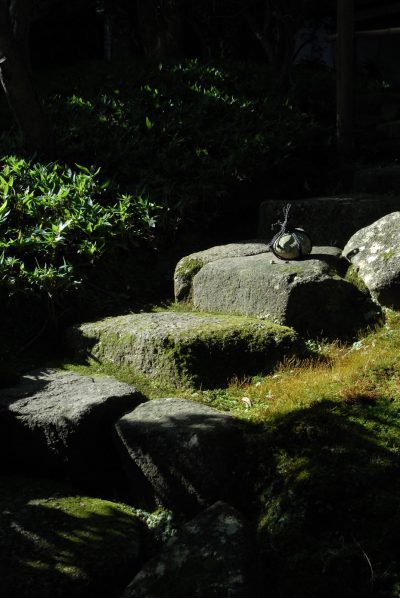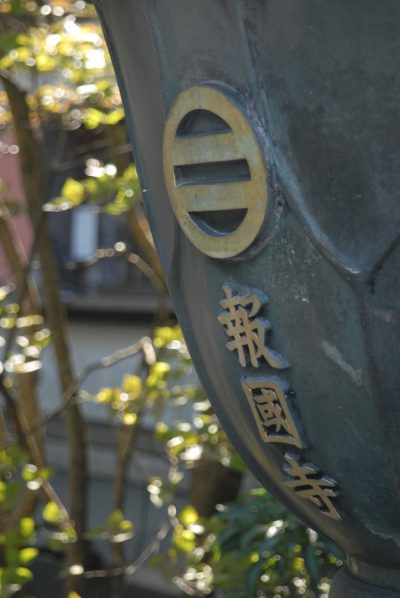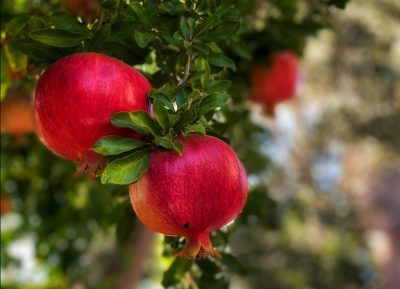Longing for Japan: Bridging the Distance Through Semiotic Wandering

For the past two years, visiting faraway places has been unrealistic for many people. Restricted travel and extended physical separation during the Covid-19 pandemic has made distances feel farther than ever. This has also affected students in our department and around the world who experienced distance learning. They have been physically apart from instructors and peers, and many students lost the opportunity to study abroad or simply supplement their academic studies by exploring the world through travel. Here in the Japanese Studies department at the University of Tübingen in Germany, our students could not study abroad as planned at Dōshisha University in Kyoto. We are waiting for better times. As we wait, how can we feel connected to the personally meaningful places and cultures that are not physically accessible to us at the moment?
For me, I long to visit Japan, a place that I lived in and have continually returned to through the decades. I have spent my life studying Japanese culture, language, and history. Through study and immersion, it has become part of my cultural and language identity. Though I research and write about it daily, the ongoing pandemic has thwarted my attempts to return.
A place that I particularly miss is the garden of Hōkokuji 報国寺 (‘Temple of protecting the land’) in Kamakura, Japan. In 1979, I stumbled upon this temple for the first time, and it remains one of my most treasured places to visit in Japan. Later on, my Japanese homestay family, the Kojima’s, moved near this temple and we often enjoyed visiting it together. By chance, I recently learned that an American contact of mine here in Tübingen was also fascinated by this small temple when she lived in Japan. Like me, she dreams of visiting it again someday. How interesting that both of us are experiencing feelings of natsukashii 懐かしい (‘nostalgic fondness when remembering the past’) for the same place. For more than forty years, I have been drawn to this garden and I yearn to visit it. It is a place that I bring friends and send students to when they visit Japan. For the foreseeable future, visiting Hōkokuji is not an option, so I search for ways for myself and my students to experience Japanese temples such as Hōkokuji remotely during the pandemic. To do this, I question what experiencing Hōkokuji consists of and what draws me to it.
 Figure 1. Garden at Hōkokuji
Figure 1. Garden at Hōkokuji
Frankl, Aliona (2009). Source: Private collection
As I long for this place, I relive being there in my mind. From the mountain gate of Hōkokuji, I begin walking along a narrow path to a small waterfall. After crossing the wooden bridge and reaching the main hall, I find myself in an open space. Encircling this bright, wide area are trees and bushes that welcome visitors with a sea of vibrant blooms or foliage, depending on the season. As I wander past the main building, I pass another sunlit garden on my left, but the shadowy forest ahead beckons me. I enter the bamboo grove and am struck by the contrast. It is dark, cool, and enclosed. The stone path is surrounded by mōsō 孟宗 (‘Phyllostachys edulis’ or ‘moso’) bamboo trees. The sky above and the destination ahead are not visible. It is a world of green. Finally, I reach a small shelter within the grove and sip matcha tea. In this quiet place, I observe the bamboo swaying in the breeze and listen to the water flowing between the forest and the caves in the hill surrounding it.
Hōkokuji has a reputation as a pawā-supotto パワースポット (‘power spot’). This is a fantastic example of an English loan word taking on a new meaning within Japanese language and culture. A pawā-supotto is a Japanese concept that expresses a spiritual, physical, or mental recharge. These are places that encourage visitors to feel in tune with the natural elements around them. Hōkokuji’s garden, with its mossy carpet and curved path through the bamboo forest, certainly offers this. Fortunately, there are videos available online that offer recordings of the garden and tea house. These can visually transport me and my students to the temple. The videos show how Hōkokuji looked at the moment of filming, but of course they lack a physical immersion, and therefore do not adequately capture Hōkokuji’s atmosphere and sense of place. Through a video, it is not possible to physically experience how objects, signs, and living things are things arranged in relation to one other.
Hōkokuji’s garden features a grove of over 2000 mature mōsō bamboo trees. Perhaps for many gaikokujin 外国人 (‘foreigner’), the word mōsō is familiar due to the increasing popularity of everyday items produced from mōsō bamboo, such as socks. However, this word has other layers of associations. Mōsō, like the temple of Hōkokuji, is situated in a long cultural history. It reflects the original purpose and cultural background of the temple. The name of this particular bamboo stems from a tale about a mother and son. Mō sō 孟宗 (‘Meng Zong’ in Chinese) is the protagonist’s name in a classic Confucian story centered on the value of filial piety. In the story, a young son cares for his sick mother by searching for bamboo shoots to give her as a cure.
This association with filial piety is also reflected in Hōkokuji’s roots in shōgun military history. Built in 1334, the temple honors Ashikaga letoki 足利家時, the grandfather of the first shōgun of the Ashikaga shogunate. It is the burial ground and temple of the Ashikaga clan, and their final resting place lies in the caves of Hōkokuji’s garden. Perhaps for many Japanese people, the word mōsō is associated with generational history. Semiotics such as this allow one to access a deeper connection to particular places that would otherwise be more superficial without background knowledge. The various associations of mōsō raise the point that the depth of connection often correlates to the depth of linguistic and cultural understanding.
Of course, visiting a Japanese garden here in Europe could help build a connection to Hōkokuji’s garden. Japanese gardens date as far back as 1200 years, and Europeans have attempted to recreate this style of garden for the past 148 years. In 1873, the first of such gardens in Europe was opened by the Austro-Hungarian monarchy at Vienna’s World’s Fair. Emperor Franz Joseph and his famous wife Sissi, who knew Philipp Franz von Siebold very well, were enthralled visitors.

Figure 2. Der Garten der Japanesen und dessen Eröffnung durch das österreichische Kaiserpaar (The Garden of the Japanese and its opening by the Austrian Emperor and Empress)
F. Kollarz (1873). Source: http://www.wiener-weltausstellung.at/faszination-fernost.html
Since the end of the 19th century, there has been a boom of semi-Japanese gardens built in Europe. This fascination with a culture deemed as “exotic” as well as a desire to become familiar with Japanese cultural “heart and soul” persist to this day. This phenomenon raises questions of what “Japanese” means for Europeans, what it means for people from Japan, and how these conceptions are demonstrated in places like gardens. What exactly makes these spaces “Japanese?” Every import embodies global aspects, and this changes the perception of what a “Japanese” garden is. These gardens are cultural translations, and as such, they in turn impact the concept of what constitutes a garden in Europe. Japanese gardens in other countries could be replicated to the tiniest pebble but they have only been part of European culture for a short time. Nothing can be perfectly “authentic,” but no matter how close to the original gardens they are, it is impossible to reproduce the deeply rooted sense of place and the historical background embodied by gardens in Japan.
Nonetheless, European Japanese gardens, with their imported plant species and concepts of “Japaneseness,” offer an opportunity to feel connected to Japan. The botanical garden here in Tübingen features a small Japanese corner. The botanical garden’s founder Professor Franz Oberwinkler was fascinated by Japanese flora and gardens. He forged a connection to Japanese culture by creating this corner. He later published a catalogue on Japanese flora with his daughter Michaela Oberwinkler, who is engaged Japanese studies [2]. In the past, this corner also operated as a vocabulary training site for my students. I went with them to study the Japanese words on the plant labels, and to observe the results of Japanese-Western contact. During the pandemic, access to the garden has been restricted. Perhaps in the past, this little corner paled in comparison to the anticipation of traveling to Japan, but these days, this “Japanese” space could offer an opportunity to dream and feel linked to the country. Additionally, it would allow students to build knowledge of the Japanese language and flora, which would also nurture a connection to the place we long to visit. If we could wander in this garden corner and read and speak Japanese, perhaps for a moment Japan would feel less far away.
Around the world, many Japanese gardens are modeled after ornamental gardens in Japan that were constructed for nobility as spaces of pleasure and recreation. Though some people may be familiar with the Japanese concepts of wabi-sabi 侘寂 (‘rustic simplicity’) and yūgen 幽玄 (‘the magic secret’), principles of Taoism, Buddhism, Shintoism, and Confucianism as well as their symbolic representations in a garden design are much more difficult to grasp. Unlike many Japanese gardens in Europe, Hōkokuji’s garden was designed with a spiritual intention. In 1334, Hōkokuji was founded by Tengan Ekō 天岸慧広, a priest of the Rinzai sect of Zen Buddhism who studied in China. It is classified as a kaiyū teien 回遊庭園の (‘strolling garden’) and indeed, it is an ideal garden for movement and reflection. In fact, this garden inspired Tengan Ekō to write poetry under the bamboo in the annex now used as a tea house.

Figure 3. Bamboo Grove at Hôkokuji
Frankl, Aliona (2009). Source: Private collection.
The bamboo grove in Hōkokuji’s garden is a space to practice contemplation through sanpo-ing 散歩-ING (‘walking’). As the foot falls on the first stepping stone, the world becomes bathed in green and silver. There is no sky above and no open space in this dense forest. Partially-obscured glimpses through the swaying stalks make it difficult to gauge how big the grove is and how far there is to go. The only sounds are the creaking bamboo symphony, the muted tones of fellow walkers, and your own breath. This is a space of subtle motion - the dappled light shifts, the bamboo sways and creaks, and views through the stalks change with each step. The word mōsō is homophonous with mōsō 妄想 (‘illusion’), a fitting association for this immersive “Gesamtkunstwerk” environment of ever-changing impressions. The design of this space encourages visitors to practice the ‘arts of noticing’ through semiotic interpretations of visual, auditory, and cognitive input. Its dynamism and indeterminacy “help one listen and pay attention” [3]. This grove offers a quiet space to observe and reflect through movement. Engaging in walking meditation allows visitors to notice the nuances and changes in the surroundings, the body, and the thoughts.
Luckily, this practice of walking meditation is not exclusive to a small temple in Japan. Of course, it is impactful to physically move through a space designed for this purpose, but we can create the ‘illusion’ of Hōkokuji anywhere. Here in Tübingen and its surrounding area, there are similar dense and quiet forests for sanpo-ing. Simply moving and noticing the subtle changes in the environment, body, and mind connects us to the spiritual intention behind Hōkokuji’s garden. By doing this activity, we can build a deeper connection to our immediate environment as well. Perhaps our favorite local sanpo supotto may even become a personal pawā-supotto.
For those who would prefer guidance, the newest Japanese import is an activity called shinrin yoku 森林浴 (‘forest bathing’ or ‘Waldbaden’ in German). These days, it is not only the Japanologist who brings students to the forest to practice sanpo-ing.

Figure 4. Forest bathing - “Shinrin yoku” in Schönbuch Nature Park’s 2018 brochure
Source: https://www.naturparkmagazin.de/schoenbuch/veranstaltungen-im-mai-2018-im-naturpark-schoenbuch/
Here in Germany, this increasingly popular imported Japanese concept is disseminated through manuals, retreats, and paid instruction. It is even supported by some health insurances. Mindful sanpo-ing, whether it is on one’s own or with the help of a trained shinrin yoku guide, makes the distance to Hōkokuji feel less vast. As we wait to visit faraway places, we find creative ways to build and maintain connections with them. Through exploring these alternative solutions, we learn to be resilient and flexible, much like mōsō bamboo.

Figure 5. Entrance at Hôkokuji
Frankl, Aliona. (2009). Source: Private collection.
References
Text Citations
[1] Eco, U. & Marmo, C. (Eds). (1989). On the Medieval Theory of Signs. In A. Eschbach, (General Ed). Foundations of Semiotics (Vol. 21). Amsterdam & Philadelphia: John Benjamins Publishing Company.
[2] Oberwinkler, Franz. (2007). Japanische Pflanzen im Botanischen Garten der Universität Tübingen. テュビンゲン大学の植物園にある日本植物. Tübingen: Botanischer Garten der Universität.
[3] Tsing, Anna. (2012). Arts of Inclusion, or How to Love a Mushroom. Mānoa, 22(2), 194. https://www.jstor.org/stable/41479491
Figure References
Figure 1. Frankl, Aliona. (2009). Garden at Hōkokuji [Photograph]. Private collection.
Figure 2. Kollarz, F. (1873). Der Garten der Japanesen und dessen Eröffnung durch das österreichische Kaiserpaar [Xylography]. http://www.wiener-weltausstellung.at/faszination-fernost.html
Figure 3. Frankl, Aliona. (2009). Bamboo Grove at Hôkokuji [Photograph]. Private collection.
Figure 4. Naturpark Schönbuch. (2018). Veranstaltungen im Naturpark Schönbuch [Brochure]. https://www.naturparkmagazin.de/schoenbuch/veranstaltungen-im-mai-2018-im-naturpark-schoenbuch/
Figure 5. Frankl, Aliona. (2009). Entrance at Hôkokuji [Photograph]. Private collection.








